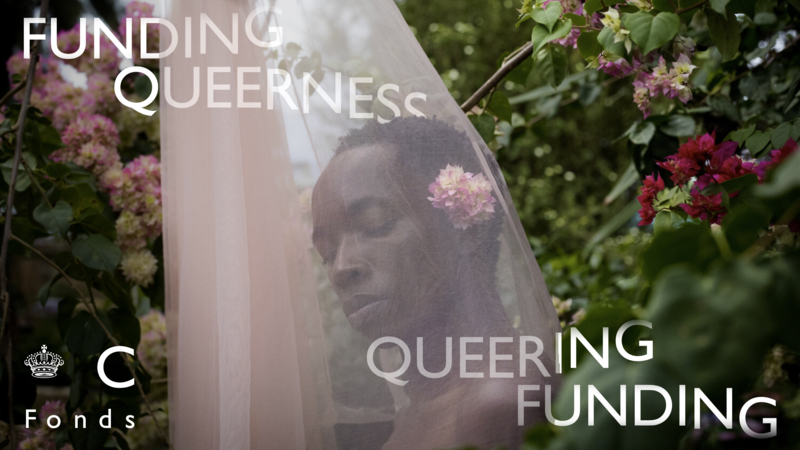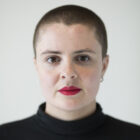Funding queerness/queering funding: lessons for funding

“Some organisations that I’ve worked with treat us like deviants. Others treat us like invaluable heroes. And in my opinion, neither is true, neither is good”.
This observation, made by South African artist and designer Mika’il the Muezzin towards the end of our Funding Queerness/Queering Funding event, cuts to the heart of the ambiguous relationship of queer artists and activists to the philanthropic infrastructure from which they receive funding.
In the context of homophobic backlash worldwide, the vital work of queer artists and activists is more and more dependent on international funding. And yet this funding can come without a nuanced understanding of what queerness means in particular cultural, geographical, social and political contexts.
Moreover, taking queerness as an example provides an opportunity to discuss how grantees are forced to present themselves and jump through hoops in order to make their work legible to a funder with whom they might have little in common. Although the needs of lesbian, gay, bisexual and transgender artists and activists are specific, figuring out how foundations can meet those needs provides broader guidance – on strategies of active listening to develop practices and policies that are based on the real needs of those that they support.
For these reasons, we chose the intersections of queer art and activism with international funding as the subject for the second in a new series of events on the infrastructure of global support for culture, entitled Seeing Like a Fund. On the 27th of September, four artists and activists came together online to reflect on the pressures they face when dealing with funders, how they balance the needs of visibility and of safety, and how they navigate different cultural imaginaries.
While queer people exist in every society, the ways they understand and describe themselves in relation to the dominant culture can be diverse. Foundations also bring their own institutional imaginaries of queerness to the interactions they have with those they support.
These varying imaginaries of queerness create a need for translation between them. The power dynamic between funders and those they support means that the bulk of this translation labour is born by artists and activists applying for funds. This is exacerbated by the fact that European institutional perspectives are too often perceived as neutral and unmediated.
Dressing up
Elyla, a performance artist and activist from Chontales, Nicaragua, spoke of the plurality of indigenous Mesoamerican conceptualisations of sexual and gender diversity. Elyla described the pressure that they and other artists in decolonial contexts feel to dress up their practice in the discourse of Western imaginaries of queerness. Using the language of this discourse, with its fixed identities, is necessary for them to gain access to funding, but makes impossible any real understanding between them and the organisations that want to provide support.
The Burden of Proof
The conversation also brought to light possible unintended negative consequences of what can seem to be best practices. Funders often have a sincere desire to prioritise the most vulnerable. But this desire, in the context of scarce resources and hostile spaces, can create a perverse incentive. As Otherandelse, a writer and visual artist from Uganda, who spoke to us under this pseudonym for their own safety, put it, “you need to be at risk, in order to matter”.
With a well publicised worsening security situation for LGBT+ people in the country, there is a burden of proof on queer artists and activists in Uganda to visibly demonstrate the danger they are in. Otherandelse talked us through the risks that queer artists and activists must expose themselves to throughout the different steps of receiving funding. They called on funding organisations to be proactive in their safeguarding of vulnerable people instead of intervening only once a critical stage is reached.
White saviour activism
Another danger that can emerge from well intentioned programmes was described by Khalid Abdel-Hadi, activist and founder of My Kali, a queer-feminist magazine by and for the Arabic speaking region and diaspora. Khalid spoke of the dangers of “white saviour activism”: the imposition of global north models of queer activism against the recommendations of local activists. These strategies, often involving high profile public interventions, then actively endanger the very people they are intended to support.
One concrete challenge for funders to be aware of is the perception of queerness as part of a foreign “agenda” that is being imposed on a culture from outside. Funders who insist, for example, grantees using their logo in all public communications may in fact be reducing the efficacy of projects and even putting participants in danger.
What can we do differently?
So what can foundations working with LGBT+ activists, artists and organisations in the global south do to truly support them? Some suggestions came out of our discussion.
- Have an open and polyvocal approach to what queerness can mean in different contexts.
- Think about what you expect applicants to provide during the application process. Do they need to provide a significant public presence track record which might put them at increased risk? Or do you ask them to share extensive personal data on themselves or their beneficiaries, without demonstrating that you can keep this data secure?
- Consider how the data you collect is categorised. Is collecting specific data on queer beneficiaries useful or counterproductive in local contexts?
- Check in frequently and proactively throughout the process of support. Asking questions allows you to meet specific needs as well as building a relationship of trust. How do you name yourself? How is your practice evolving, in relation to international dialogue of queer politics?
- Demonstrating active listening, even when critiqued. Activists and artists who are heavily dependent on funding may not always feel comfortable raising their concerns directly with you, so be open in order to hear crucial feedback.
This discussion draws on the Prince Claus Fund’s experience working with queer artists and activists throughout its history of support to socially engaged cultural practitioners under pressure in Africa, Asia, Latin America, the Caribbean and Eastern Europe. Keep an eye on our website and social media for upcoming Seeing Like a Fund events on a range of topics coming up in 2024.
Image credit: DeLovie Kwagala.
Authors


